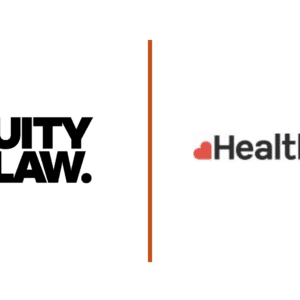Furlough Leave – Guidance Updated
Key Contact: Claire Knowles
Author: Rebecca Mahon
The Government has updated various pieces of its business support guidance (13 pieces in total) to set out in more detail how the coronavirus job retention scheme (CJRS or “furlough scheme”), will operate from 1 November 2020.
As we have worked through the updates, the vast majority reiterates/clarifies what we already knew, however please note the following key points:
Can we retrospectively put someone on furlough from 1 November?
Where consistent with employment law, any flexible furlough or furlough agreement made retrospectively that has effect from 1 November 2020 will be valid for the purposes of the CJRS provided that the retrospective agreement is put in place by the 13 November 2020 (i.e. this Friday).
When do I have to submit my claims?
All claims for periods from 1 July 2020 to 31 October 2020 must be submitted no later than 30 November 2020. Claims from 1 November 2020 must be submitted by 11.59pm 14 calendar days after the month you’re claiming for. If this time falls on the weekend then claims should be submitted on the next working day.
For claim periods starting on or after 1 November 2020, you’ll be able to claim from 11 November 2020.
Which employees can I claim for (from 1 November)?
You can claim for employees who were employed on 30 October 2020, as long as you have made a PAYE RTI submission to HMRC between the 20 March 2020 and 30 October 2020, notifying a payment of earnings for that employee.
You do not need to have previously claimed for an employee before the 30 October 2020 to claim for periods from 1 November 2020.
If you made employees redundant, or they stopped working for you on or after 23 September 2020 you can re-employ them and put them on furlough. This applies as long as the employee was employed and on your PAYE payroll on or before 23 September 2020. We assume that the retrospective furlough arrangement must be in place by 13 November 2020 (i.e. this Friday) as referenced above.
To be eligible for the grant, you must have confirmed to your employee (or reached collective agreement with a trade union) in writing that they have been furloughed. The employee does not have to provide a written response, however we recommend that where possible, you seek employee agreement to any furlough arrangements as a matter of best practice.
Is there a cap on the number of employees I can claim for?
There is no maximum number of employees you can claim for from 1 November 2020.
Is there a minimum amount of time an employee has to be furloughed for?
There is no minimum furlough period, agreed flexible furlough agreements can last any amount of time. Employees can enter into a flexible furlough agreement more than once. Although flexible furlough agreements can last any amount of time, the period that you claim for must be for a minimum claim period of seven calendar days.
Can employees take holiday whilst on furlough?
Yes. If an employee is allocated as being on flexible furlough, then any hours that they take as holiday during the claim period should be counted as furloughed hours rather than working hours. However, the guidance is keen to emphasise that employees should not be placed on a furlough arrangement for a period simply because they are due to take holiday. Such actions may be deemed abusive, and “contrary to the exceptional purpose of the CJRS”, which ultimately could jeopardise your ability to access the scheme. If a furloughed employee takes holiday, you will need to “top up” their pay to their normal holiday pay.
Can furloughed employees still undertake training?
The new guidance specifically states that furloughed employees should be encouraged to undertake training. Employees must be paid at least the minimum wage during any time that they are undertaking training.
Can I furlough employees I have inherited under TUPE?
For claim periods after 1 November 2020, a new employer is eligible to claim in respect of the employees of a previous business transferred if the TUPE or PAYE business succession rules apply to the change in ownership. The employees being claimed for should have:
- been employed by their prior employer on or before 30 October 2020; and
- transferred from their prior employer to their new employer on or after 1 September 2020 via TUPE.
Can an employee be furloughed during their notice period?
You can continue to claim for a furloughed employee who is serving a statutory or contractual notice period, however grants cannot be used to substitute redundancy payments. Please note, the guidance states: “the government is reviewing whether employers should be eligible to claim for employees serving contractual or statutory notice periods and will change the approach for claim periods starting on or after 1 December 2020, with further guidance published in late November”. We will keep you updated in this regard however if you are thinking of making any dismissals in the forthcoming weeks, we recommend that these are done sooner rather than later so that you can make the most of the currently available grants during the notice period.
What happens if a furloughed employee gets sick?
Furlough and sick leave cannot run concurrently. It must be one or the other. If a furloughed employee who becomes sick is moved onto SSP, you have to cover the SSP payments (no grant can be recovered via the CJRS), although you may qualify for a rebate for up to two weeks of SSP if the sickness is related to coronavirus. Alternatively, employers can choose to treat a sick employee as on furlough leave instead of sick leave if they wish. In such circumstances, we recommend that clear expectations are set from the outset.
Can an employee who is on maternity leave request to be put on furlough leave instead?
If your employee decides to end their maternity leave early to enable them to be furloughed (with your agreement), they will need to give you at least 8 weeks’ notice of their return to work and you will not be able to furlough them until the end of the 8 weeks. Ordinarily, an employer can agree with their employee to accept less than 8 weeks’ notice from the employee to return to work, however the new guidance suggests that you will not be able to put them on furlough for at least 8 weeks.
Finally please note, the updated guidance states that from December 2020, HMRC will publish employer names and for companies and Limited Liability Partnerships (LLPs), the company registration number of those who have made claims under the scheme for the month of December onwards.
For advice and support on the coronavirus job retention scheme, please contact our employment team.















